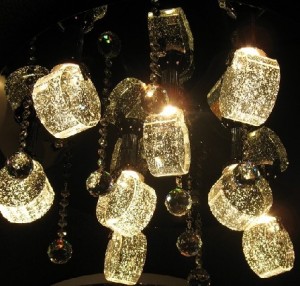LED lighting broad are typically used in LED panels and in some cases LED street lights. There are connection ways for LEDs: in cascade and in parallel. In practice, the most likely used ways are all kinds of combinations of cascade circuits and parallel circuits, determined by the specific requirements of input/output voltage, power factor, etc.
In what way should LEDs be connected? In cascade or in parallel? Which connection is more suitable for LED lighting broad work with a wide range (AC85V-265V)? At present, most LED power suppliers are none-isolated. The output of wide range voltage should not larger than 72V. In other words, the maximum number of cascaded LED chips is 23. Also, number of LEDs in parallel is limited, normally 6 group/8 group/12 group. If we connect too many LEDs in parallel, the working current (240mA in total) will exceed the threshold level and lead to an excess temperature, causing damages to LED Street Light.
Relations of LED series-parallel connection with PFC power factor:
The current LED power suppliers in the market have three different types of PFC: 1. Power suppliers without any specialized PFC circuits, PFC of which is around 0.65; 2. Power suppliers with passive PFC circuits, PFC of which is around 0.92; 3. Power suppliers with active 7527/6561 PFC circuits, PFC of which is about 0.99. If fact, the power factor of solution 2 is just a little bit lower than that of solution 3, but cost much less than it. LED High Bay manufacturers are more willing to design power suppliers with passive PFC circuits rather than active PFC circuits. Passive PFC circuit, also known as valley fill PFC circuit, has a working voltage half of the peak of the input voltage (AC). For example, if the input voltage has an average value of 180V, the peak value should be: 180 x 1.414 = 254V, half of it is 127V, subtract this value by 30V (voltage difference of the step-down supplier), then we have the maximum output voltage: 90V. That means the maximum cascaded LED chips is 28. Thus if we want to have a higher power factor, we cannot connect too many chips in series in the LED lighting broad. Otherwise, the low voltage cannot be reached.

